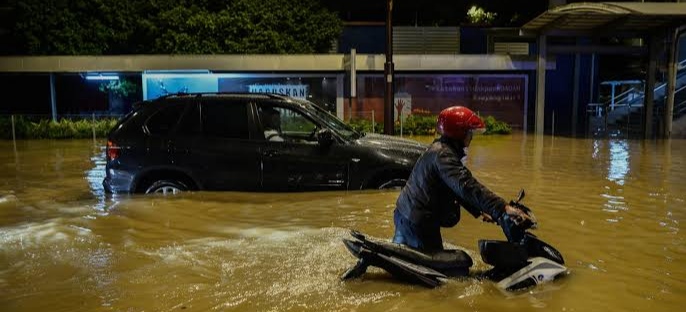By Ebi Kesiena
Four months after the start of record floods linked to climate change, the standing water has curdled into a pestilent soup breeding malaria, cholera and other diseases.
The UN has warned of a “second wave” of catastrophe, with the risk that deaths from water-borne disease and malnutrition will outstrip the 1,700 drowned and electrocuted in the initial cascade.
Aamir Hussain a resident of submerged village in Dadu district of Sindh province stands on the roof of his home in southern Pakistan surveying the fetid floodwaters all around. His head haloed by a whirlwind of mosquitoes so do the bugs and the gamble that they will infect his wife and two children.
“The mosquitoes bite a lot and we fall sick,” said the 25-year-old, atop a brickwork compound framing a courtyard awash with putrid, sucking mud.
His brother, who shares this home, has already ventured off the roof to treat his sick children at the hospital with borrowed cash.
“Some of our nets are torn now so we are worried,” said Hussain, whose infant son has fallen ill.
Sindh has been worst hit by the catastrophic flooding which put a third of Pakistan underwater, displaced eight million, destroyed or damaged two million homes, crippled 1,500 hospitals and clinics and caused an estimated $28 billion in damages.
Earlier in the week, Climate change minister Sherry Rehman said that more than 20 million people are still in need while Eight million of those require urgent medical services”, she said.
Zahida Mallah has already been tipped over the edge.
In a bleak camp south of Dadu, outside the city of Hyderabad, the 35-year-old explained she is in mourning for her twin two-month-old sons.
Before the floods, southern Pakistan was already devastated by grinding poverty. Now aid only sporadically penetrates the patchwork swampland, while the true number of those in need has yet to even be discovered.
Doctors and officials offer contradicting figures, as they grapple to understand the scale. In Dadu the official death toll is just 23, but everyone privately agrees the real figure must be far higher.
“This is devastation beyond the government’s approach,” said provincial health monitor Faheem Soomro, as young doctors tally the day’s fresh patients at a boardroom table.
Half of malaria tests are coming back positive and most homes have suspected cases.
Sindh has recorded 208,000 cases of malaria so far this year, a dramatic rise from 2021, when cases were reported.


































